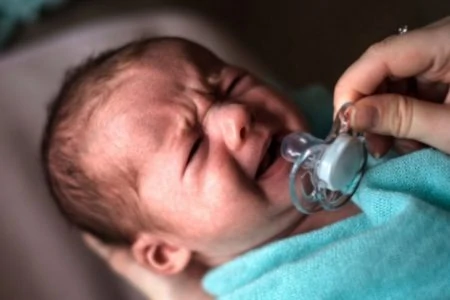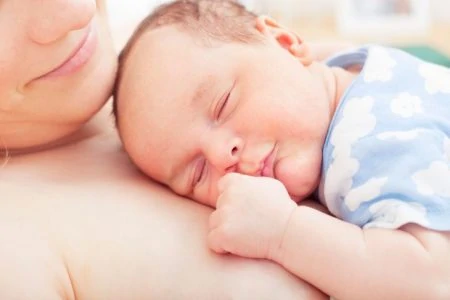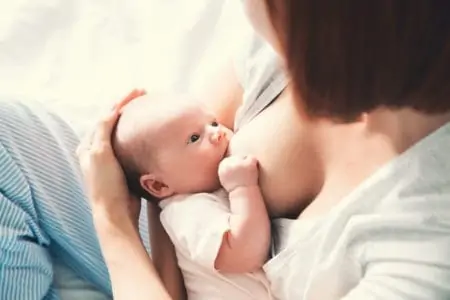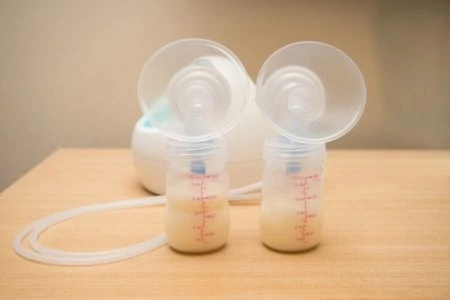Do you worry that giving your baby a pacifier might ruin your breastfeeding journey? You have likely heard horror stories about nipple confusion or babies refusing the breast after using an artificial nipple.
You can successfully combine breastfeeding and pacifier use with the right timing. You do not have to choose one or the other.
Your baby can use a pacifier to self-soothe, which gives you a break from constant comfort nursing. With a few guidelines, you can introduce a binky without risking your breastfeeding relationship.
Key Takeaways
- Balance is possible: You can give a pacifier to a breastfed baby without ruining their latch or milk supply.
- Benefits exist: Pacifiers reduce the risk of SIDS, help babies self-soothe, and provide comfort during stressful moments like shots or flights.
- Watch for risks: Potential downsides include earlier weaning, increased risk of thrush or ear infections, and dental issues if used too long.
- Timing matters: Experts recommend waiting until breastfeeding is well-established (usually 3 to 4 weeks) before introducing a pacifier.
Why You Might Want to Use a Pacifier
You might wonder why any parent would risk a pacifier if it could interfere with breastfeeding. However, pacifiers offer distinct advantages for both parents and babies.
- Reduces the risk of SIDS: Sudden Infant Death Syndrome is a major fear for parents. Research shows that babies who suck on pacifiers during sleep have a significantly lower risk of SIDS (1).
- Encourages self-soothing: Babies lack emotional regulation skills. A pacifier helps them calm down independently, which can stop a crying fit in its tracks.
- Satisfies the sucking reflex: Babies have a natural, intense urge to suck. A pacifier is a safer, cleaner option than their thumb or random objects they find on the floor.
- Provides distraction: Pacifiers work wonders during medical procedures, blood tests, or flights to help equalize ear pressure.
Potential Risks of Pacifier Use
Pacifiers are not perfect. There are valid downsides you should consider before popping one in your baby’s mouth.
- Encourages earlier weaning: Some studies suggest that frequent pacifier users may wean from the breast sooner. The pacifier satisfies the urge to suck, which might reduce the time they spend stimulating your supply at the breast.
- Increases thrush risk: Pacifiers can harbor yeast. This increases the chance of thrush, an oral yeast infection that can transfer to your nipples and cause pain during feeding.
- Leads to ear infections: Continuous sucking opens the auditory tubes, which allows throat bacteria to migrate to the middle ear. This can lead to frequent ear infections (2).
- Masks hunger cues: If you offer a pacifier every time the baby fusses, you might miss early signs of hunger. This can lead to poor weight gain in newborns.
- Impacts dental health: Long-term use can cause dental malocclusion (misaligned teeth). Most dentists recommend breaking the habit by age two or three (3).
When to Introduce the Pacifier
Timing is critical when you introduce an artificial nipple to a breastfed infant. You want to ensure they master the breast first.
If you introduce the pacifier before your baby understands how to latch deeply on the breast, they may develop a shallow latch or “nipple confusion.”
Wait 4 Weeks
Best Pacifier Shapes for Breastfed Babies
Not all pacifiers are created equal. To maintain a good breastfeeding relationship, avoid generic bulb-style nipples. These can encourage a shallow latch, which hurts your nipples and transfers less milk.
If a baby gets used to the easy shape of a bulb pacifier, they may become “lazy suckers” at the breast.
Pro Tip
Best Times to Offer a Pacifier
You should prioritize breastfeeding over pacifiers. Always nurse your baby first. If they seem satisfied but still want to suck for comfort, you can then offer the pacifier.
A good rule of thumb is to limit pacifier use to sleep times. This maximizes the SIDS protection benefit while minimizing the risk of missing hunger cues during the day.
If the pacifier falls out while your baby is sleeping, you do not need to put it back in.
Reinserting the pacifier repeatedly can create a sleep prop dependency, where the baby cannot sleep without it.
FAQs
Finding Your Balance
Pacifiers can be a helpful tool for breastfeeding parents when used correctly. They offer a break for you and comfort for your baby.
Pay attention to your baby’s hunger cues, wait until breastfeeding is established, and choose a breastfeeding-friendly shape. You can make it work without sacrificing your nursing goals.











